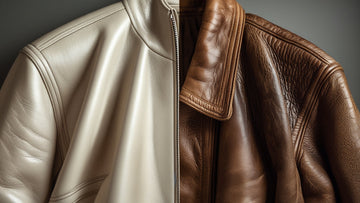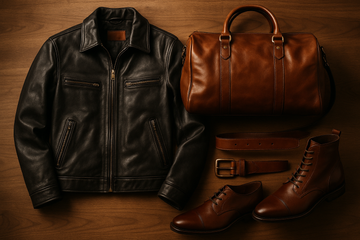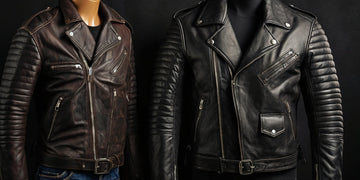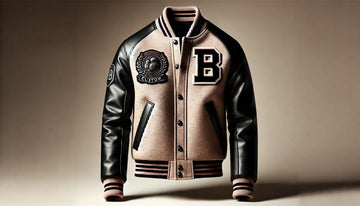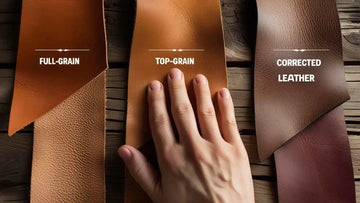Lambskin vs. Cowhide: Which Luxury Leather is Right for You?
When choosing the perfect luxury leather, the debate between lambskin and cowhide is a common one. Both types of leather have their own strengths, making them suitable for different fashion and accessory needs. Whether you prioritize softness, durability, or affordability, understanding the differences will help you make an informed choice.
Understanding Lambskin Leather
Lambskin leather is a premium material known for its ultra-soft texture and elegant appeal. Derived from young sheep, this type of leather offers an unmatched level of smoothness and comfort.
-
Soft and Supple: Lambskin has a delicate, buttery feel that sets it apart from other types of leather.
-
Lightweight: Compared to cowhide, lambskin is significantly lighter, making it a popular choice for luxury fashion items.
-
High-End Appeal: Often used in designer handbags, jackets, and gloves, lambskin is synonymous with sophistication.
Because of its softness, lambskin requires more care. It is prone to scratches and can be less resistant to wear and tear compared to cowhide.
Understanding Cowhide Leather
Cowhide leather is a durable and versatile material made from the hides of cows. It is widely used in fashion, furniture, and accessories due to its strength and resilience.
-
Durable and Tough: Cowhide is much tougher than lambskin, making it an excellent choice for long-lasting products.
-
Weather-Resistant: Unlike lambskin, cowhide can handle rough conditions, making it ideal for boots, belts, and rugged jackets.
-
Affordability: Since cowhide is more readily available, it tends to be more affordable than lambskin without compromising on quality.
This makes cowhide the preferred leather for heavy-use items like biker jackets, work boots, and leather furniture.
Comfort and Feel: Softness vs. Firmness
When it comes to texture, lambskin is the clear winner for those who love a luxurious feel.
-
Lambskin: Soft, delicate, and smooth to the touch. It molds easily to the body and is often described as feeling like a second skin.
-
Cowhide: Firmer and stiffer when new but softens over time with wear.
If you want a leather that feels indulgent and elegant from the start, lambskin is your best bet. If durability is more important, cowhide will age gracefully over time.
Durability: Which Leather Lasts Longer?
Durability is a crucial factor when investing in luxury leather goods.
-
Lambskin: Due to its delicate nature, lambskin is more susceptible to scratches, scuffs, and moisture damage. It requires regular conditioning to maintain its softness.
-
Cowhide: Highly resistant to wear and tear, making it a better option for everyday use. It withstands scratches, spills, and heavy use far better than lambskin.
If you’re looking for a leather that can withstand years of use without losing its quality, cowhide is the superior choice.
Maintenance and Care: Which is Easier to Maintain?
Luxury leather requires proper care to maintain its beauty and longevity, but some types are easier to manage than others.
-
Lambskin Care: Needs gentle cleaning and conditioning. Must be kept away from moisture and rough surfaces to avoid damage.
-
Cowhide Care: Easier to maintain. Can handle more exposure to the elements and requires less frequent conditioning.
If you don’t want to worry about constant upkeep, cowhide is the better choice.
Style and Aesthetic Appeal
Both lambskin and cowhide bring their own unique aesthetic to luxury leather products.
-
Lambskin: Sleek, refined, and delicate in appearance. It gives off an ultra-luxurious vibe, often used in high-end designer brands like Chanel and Gucci.
-
Cowhide: More rugged and structured, lending a classic and sturdy appearance. Perfect for brands like Harley-Davidson and Levi’s.
Your choice will depend on whether you prefer a polished, high-fashion look or a more classic, structured style.
Price: Which Leather is More Cost-Effective?
The cost of luxury leather depends on factors like availability, processing, and overall demand.
-
Lambskin: Generally more expensive due to its softness and limited availability.
-
Cowhide: More affordable because it is widely produced and used in various industries.
If budget is a concern, cowhide offers a luxurious feel without the high-end price tag of lambskin.
Best Uses for Each Type of Leather
Each leather type excels in different product categories.
-
Best for Lambskin:
-
High-end fashion jackets
-
Designer handbags
-
Soft leather gloves
-
Luxury wallets
-
Best for Cowhide:
-
Motorcycle and bomber jackets
-
Heavy-duty boots and belts
-
Leather sofas and furniture
-
Durable work gloves
Choosing between lambskin and cowhide ultimately depends on your lifestyle, budget, and personal preferences.
FAQs
Which leather is better for everyday use?
Cowhide is better for everyday use due to its durability and resistance to wear and tear.
Is lambskin or cowhide better for luxury handbags?
Lambskin is preferred for luxury handbags because of its soft, elegant texture, while cowhide offers more durability.
Does lambskin scratch easily?
Yes, lambskin is prone to scratches and requires more careful handling compared to cowhide.
How do I maintain lambskin leather?
Use a soft cloth to clean it regularly and apply a leather conditioner to keep it supple.
Is cowhide waterproof?
Cowhide is not completely waterproof but is more resistant to moisture than lambskin.
Which leather is more expensive, lambskin or cowhide?
Lambskin is generally more expensive due to its softness and high-end appeal.

